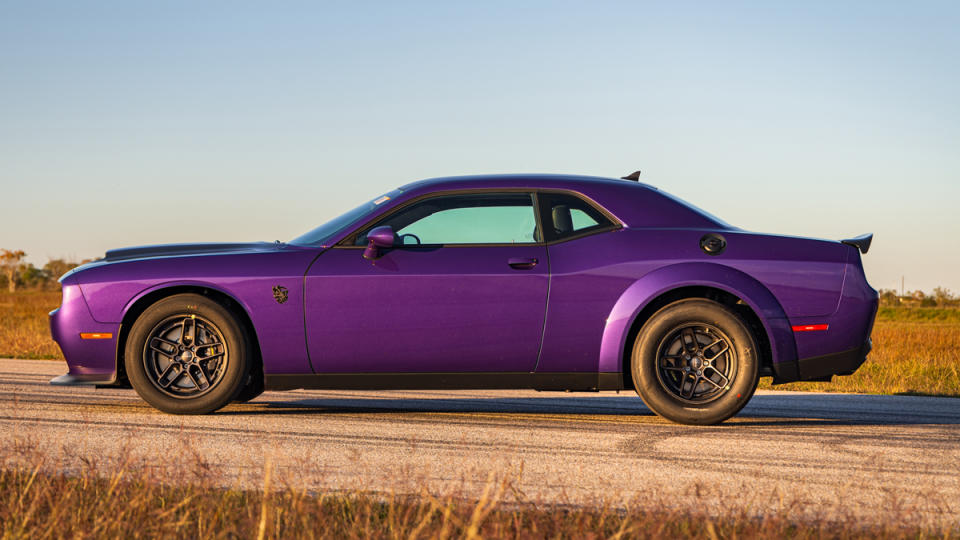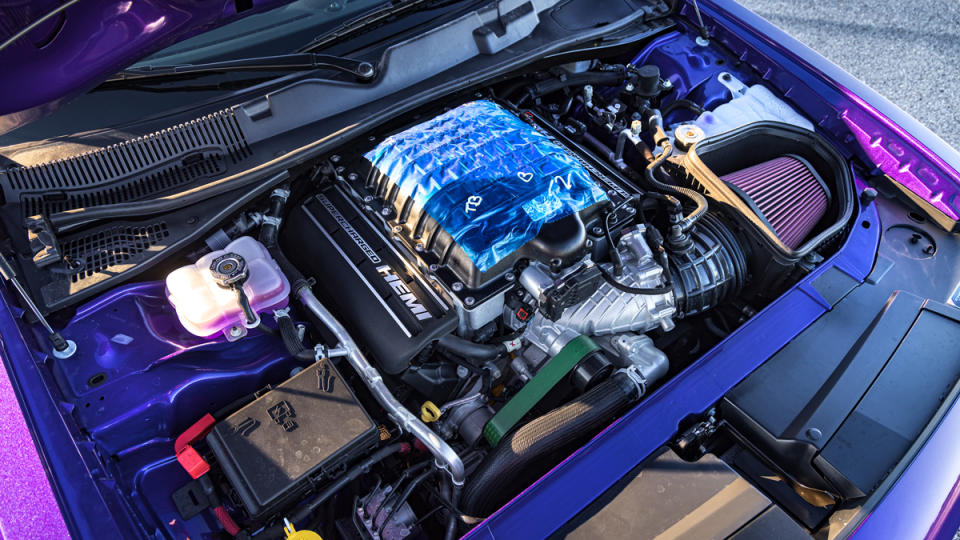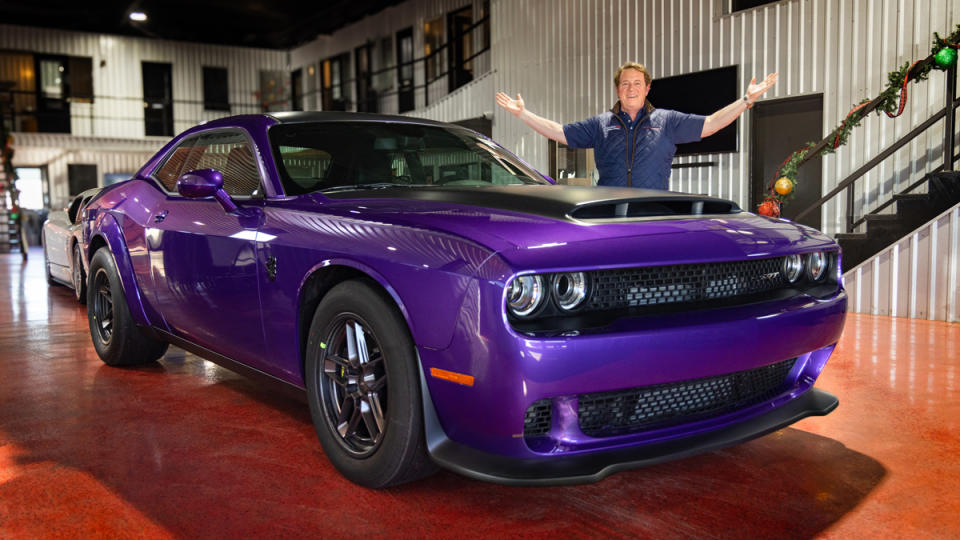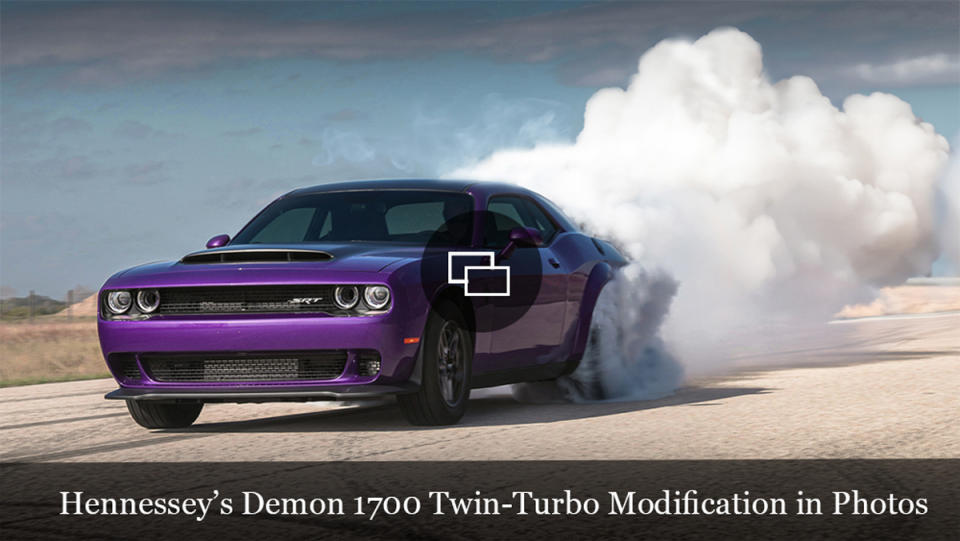Hennessey’s Outrageously Modified Dodge Demon Is a 1,700 HP Monster

When Dodge announced the internal-combustion swan song for the Challenger last year, who could have possibly thought that the 1,025 hp Dodge Challenger SRT Demon 170 sounded underwhelming? Well, John Hennessey, that’s who. The Texas-based tuner and supercar manufacturer promptly bought one of the limited-production Demon 170s, only to pull off the supercharger and create the Demon 1700 Twin-Turbo modification. Now, Hennessey Performance Engineering plans to offer a Demon 1700 Twin-Turbo package to customers as the inaugural project of its newest department, dubbed Hennessey Special Operations (HSO), which is slated to produce only 15 to 20 builds per year.
In stock form, a Dodge Challenger SRT Demon 170 doubles down on the original 2018 Demon’s recipe by bolting a 3.0-liter supercharger onto the 6.2-liter Hellcat V-8. This boosts output by 40 percent, delivering 1,025 hp and 945 ft lbs of torque when running on E85 fuel. With the latter, the Demon 170 is claimed to be able to cover zero to 60 mph in as little as 1.66 seconds, and fire off a quarter-mile time of only 8.91 seconds at a trap speed of 151.17 mph. Dodge plans to sell a total of 3,300 examples, each with a starting price of $96,666.
More from Robb Report
This Pristine 1997 Dodge Viper GTS Has Only 64 Miles on It. Now It's up for Grabs.
32 Cars From a Disgraced YouTuber's Insane Collection Are Heading to Auction

The rare Demon 170 buyer who needs more neck-snapping acceleration can apply for a slot to receive the Demon 1700 Twin-Turbo package from Hennessey. Modifying each car requires removing the original Hellcat engine and ZF eight-speed transmission, which Hennessey plans to shrink-wrap and preserve, then swapping in an all-new blueprinted motor and gearbox that can handle the expected jump in output. Bolting on two turbochargers should allow for a quarter-mile run in as low as 7.9 seconds at 175 mph.
A rating of 1,700 hp pushes these Challengers right up to the cusp of Hennessey’s own Venom F5 hypercar, which uses a 6.6-liter V-8 and two turbos to crank out 1,817 hp and 1,193 ft lbs of torque. But the Demon 1700 Twin-Turbo will be even rarer, as only 12 examples will be made.

As Hennessey himself tells Robb Report, “Customers can’t get enough of these muscle cars because they make big power, are as fast as hell, and in some cases . . . like the Demon 1700 Twin-Turbo, are totally outrageous!”
Such enforced scarcity fits into the vision for the newly formed HSO, in contrast to Hennessey’s main operation that delivered over 1,100 cars to customers over the past two years—a total more closely resembling serial-production numbers than typical tuner-shop figures.

In a bit of understatement, Hennessey described his company’s creations thus far as “high-horsepower vehicles” and HSO’s future builds as “mega-powerful.” What comes next remains to be seen, but for now, pricing for the Demon 1700 Twin-Turbo package will start at around $200,000, not including the Challenger SRT Demon 170 donor car.
Click here for more photos of Hennessey’s Demon 1700 Twin-Turbo modification.
Best of Robb Report
Sign up for Robb Report's Newsletter. For the latest news, follow us on Facebook, Twitter, and Instagram.


